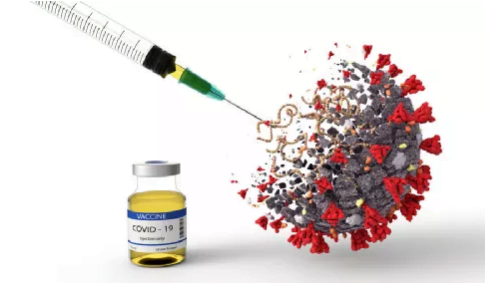The FDA is fast-tracking the COVID-19 vaccine, and it is ready in some areas. However, a key distribution factor posed a major challenge: keep it cold and refrigerate.

The COVID-19 vaccines developed by different pharmaceutical companies have different storage requirements. For example, Moderna’s vaccine needs to be stored at -20°C (-4°F), while Pfizer’s vaccine needs to be stored at -70°C (-94°F).
These strict temperature requirements must be observed and monitored throughout the supply chain to ensure that the vaccine is feasible when it reaches the patient. Ensuring that the COVID-19 vaccine is stored at the right temperature is critical, and this is largely a technical issue. Facts have proved that there is a mature technology that can simplify the entire supply chain, namely RFID.
Vaccines are a key step to return to normal, and RFID systems are a practical and accurate solution for monitoring environmental conditions. Passive RFID technology is widely used in hospitals, pharmacies and other medical facilities. As a means of tracking equipment, drugs and monitoring access management, it can simply meet the strict temperature requirements of vaccines.
Charlie Goetz, CEO of Powercast, a radio frequency wireless power company, described how to quickly and easily deploy wireless power and RFID to help ensure the effectiveness and safety of the COVID-19 vaccine.
According to Gotz, the first thing to understand is that continuously and reliably monitoring what we call temperature is a huge technical challenge.
The wires connected to the internal temperature probe are an option, but the wires cannot extend outside the door of the freezer, otherwise they cannot be completely sealed. Traditional glass thermometers and mercury thermometers are also an option, but the freezer must be opened (only twice a day) or read through glass windows (difficult).
Digital thermometers that communicate via BLE may also be problematic, because freezers are usually composed of a few inches of metal, insulating materials, and other communication blocking materials. In addition, most batteries cannot work at such low temperatures, which means that battery-powered temperature sensing devices are at risk of malfunctioning. Some battery manufacturers offer products that can indeed work at ultra-low temperatures, but wireless-powered alternatives may be more cost-effective.
In addition, an independent, RFID-based temperature probe can be powered and read from outside the refrigerator without having to run wires to the probe, open the door, worry about communication or battery failure, etc. The secret weapon of RFID is that it does not rely on batteries or connected power sources.
Powercast has wirelessly powered sensor tags that can read humidity, light and temperature throughout the supply chain to ensure the integrity of temperature data. Powercast tags can realize high-precision environmental condition monitoring based on RFID, and can realize remote RFID function without battery. This technology provides a completely maintenance-free and battery-free sensor tracking solution for RFID applications (such as COVID-19 vaccine monitoring).
Goetz said: “RFID has become a standard in medical facilities around the world, which means that the implementation of radio frequency power supply equipment such as wireless temperature probes will not require any additional infrastructure investment or installation. Powercast’s RFID sensor tags use RFID readers Energy to read humidity, light and temperature. Currently our customers use it for a variety of purposes from monitoring shipments to building automation control.”
RFID technology has been used in the COVID-19 vaccine distribution plan, including an optional RFID chip embedded under the label of a prefilled syringe produced by Apiject. But this application became the subject of a factually false conspiracy theory that claimed that the government was trying to track individuals by injecting microchips-the optional Apiject RFID chip should be embedded in the syringe tag and is by no means injectable to the human body.
As reports of missing COVID-19 vaccine due to storage problems continue to emerge, the time is ripe for a robust and simple surveillance program. One of the main advantages of RFID is its development and wide distribution.
“As far as the application industry is concerned, wireless power technology is a very vertical technology. Our current active customers include automotive, personal care, manufacturing, entertainment, medical, shipping, logistics and aerospace industries.” Goetz said.





